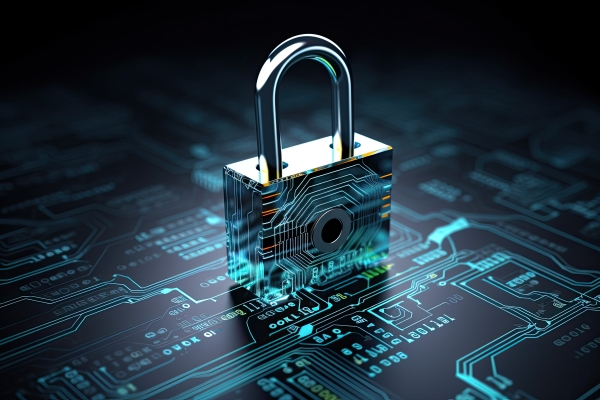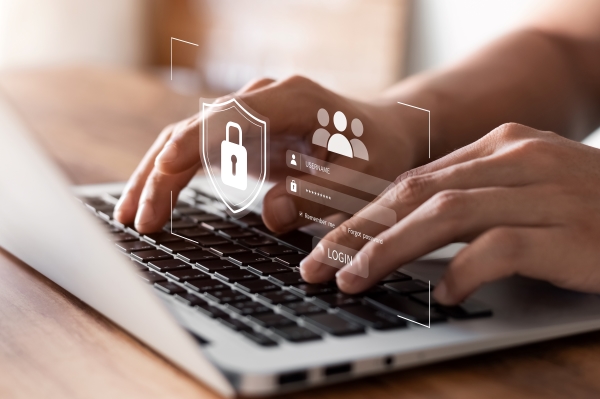
In today’s digital age, it is crucial to keep IT systems safe and secure for everyone. Whether you are an individual, business, or organisation, protecting your digital assets is essential to prevent financial loss, reputational damage, and other negative consequences. Cyber threats are becoming increasingly sophisticated, making it vital to stay ahead of the game and take proactive measures to safeguard your online security. In this article, we will discuss the top ways to ensure that your IT systems remain secure. From using strong passwords and keeping software up-to-date to implementing advanced security solutions and training employees on best practices, there are many effective methods to protect your digital infrastructure. By taking the necessary steps, you can minimise the risk of cyber-attacks and maintain the trust of your customers, stakeholders, and partners. So, read on to learn more about how to keep your IT systems safe and secure.
Use strong passwords and authentication methods

Strong passwords and authentication methods are vital for protecting your online accounts and sensitive information. A strong password is at least 12 characters long, includes a mix of uppercase and lowercase letters, numbers, and special characters, and isn’t based on personal information or a dictionary word. It’s also important to use unique passwords for each account and avoid using the same password across multiple systems. Two-factor authentication adds an extra layer of security by requiring users to provide additional verification beyond their password, such as a fingerprint or a one-time code sent via SMS. Implementing strong password policies in the workplace can help prevent cyberattacks and protect valuable assets. Employee training, minimum password standards, regular password changes, and the use of password managers and two-factor authentication can all contribute to a safer and more secure environment.
Regularly update software and operating systems
Regularly updating software and operating systems is crucial for maintaining a secure and efficient IT infrastructure. Updates often include security patches that fix known vulnerabilities, bug fixes that address performance issues, and improved functionality that enhances user experience. Enabling automatic updates ensures that your systems stay up-to-date without requiring manual intervention. This can be done by configuring settings in the software or operating system to automatically check for and install updates.
Failing to update software and operating systems can leave your business exposed to potential risks. Outdated software may have known vulnerabilities that can be exploited by cybercriminals, while unpatched operating systems can be susceptible to malware attacks. To avoid these risks, it’s essential to plan and execute updates without disrupting business operations. This can be achieved by scheduling updates during off-peak hours, testing updates on a small group of devices before rolling them out company-wide, and providing employee training to minimise impact on productivity. By prioritising software and operating system updates, businesses can ensure a secure and reliable IT infrastructure.
Back up critical data regularly
Critical data includes customer information, financial records, and intellectual property that needs to be backed up to ensure its safety. There are various types of backup options available, including cloud, local, and hybrid solutions. Cloud backups store data remotely, while local backups store data on-site. Hybrid backups offer a combination of both. Regular backups provide several benefits, including data recovery and ransomware protection. In case of a data breach or hardware failure, backups allow you to restore lost data quickly, minimising downtime and productivity loss. Additionally, backups can help protect against ransomware attacks by allowing you to recover encrypted files without paying a hefty ransom.
Choosing the right backup solution depends on factors like storage space, speed, security, and cost. Businesses and individuals should consider their specific needs and budgets when selecting a backup solution. Scheduling backups regularly, such as daily or weekly, ensures that data is continuously protected. It’s also essential to test backups frequently to ensure they can be successfully restored.
Implement firewalls and intrusion detection/prevention systems
Firewalls and intrusion detection/prevention systems (IDPS/IPS) are crucial for network security. Firewalls act as a barrier between trusted and untrusted networks, controlling incoming and outgoing traffic based on security rules. IDPS/IPS monitor network traffic for suspicious activity and take action to block or alert potential threats. Implementing firewalls and IDPS/IPS provides enhanced network security, real-time threat detection, and unauthorised access prevention. There are different types of firewalls (hardware, software) and IDPS/IPS (network, host-based), each with its advantages and limitations. Effective configuration and maintenance involve defining strict access control policies, updating signatures and rules, monitoring logs, and performing routine security audits. Proper configuration and maintenance minimise false positives and optimise system performance.
Train employees on cybersecurity best practices
Human error remains a significant vulnerability, and phishing attacks often rely on tricking staff members into divulging sensitive information or gaining access to systems. Comprehensive training can help mitigate this risk. Cover essential topics like password management, social engineering, and safe handling of email attachments. Emphasise the importance of strong passwords, warn against phishing scams, and teach employees how to identify and report suspicious emails. Interactive modules, online courses, or in-person training sessions can effectively convey this knowledge.
Beyond training, integrate cybersecurity into your company culture and policies. Encourage a mindset where employees feel responsible for upholding security standards. Implement procedures for reporting incidents, enforcing accountable password management, and keeping software up-to-date. Regularly review and update training content to address new threats and stay ahead of emerging risks. By educating employees and fostering a security-focused work environment, you can significantly strengthen your organisation’s defences against cyberattacks. This investment will not only protect your business but also enhance customer trust and loyalty.
Monitor networks and systems for suspicious activity

Protecting your business or personal network from cyber threats requires proactive monitoring and swift incident response. Network monitoring involves tracking system activities to detect potential security breaches, while incident response refers to the actions taken when an attack is detected. Utilise tools like Security Information and Event Management (SIEM) solutions, log analysis, and vulnerability scanning to monitor networks and systems for suspicious behaviour.
Familiarise yourself with common indicators of compromise, such as unusual login attempts, file access or unexpected changes to settings or configurations. When responding to an incident, promptness is key. Have a comprehensive plan in place that includes isolating affected areas, containing the threat, identifying the root cause, and taking steps to prevent similar events in the future. Don’t let cyber threats catch you off guard. Stay vigilant by regularly monitoring your networks and systems, and be prepared to react quickly and efficiently when faced with a security incident.
With the increasing number of cyber-attacks and data breaches, it’s more important than ever to take steps to protect sensitive information and prevent unauthorised access to computer systems. By implementing strong passwords, keeping software up-to-date, being cautious with emails and attachments, using firewalls and antivirus software, and regularly backing up data, individuals and organisations can greatly reduce their risk of falling victim to cybercrime. Additionally, education and awareness are key in the fight against cyber threats, as they can help people understand the risks and take steps to protect themselves. By staying informed and vigilant, we can all do our part to safeguard our personal information and the integrity of our digital infrastructure.
